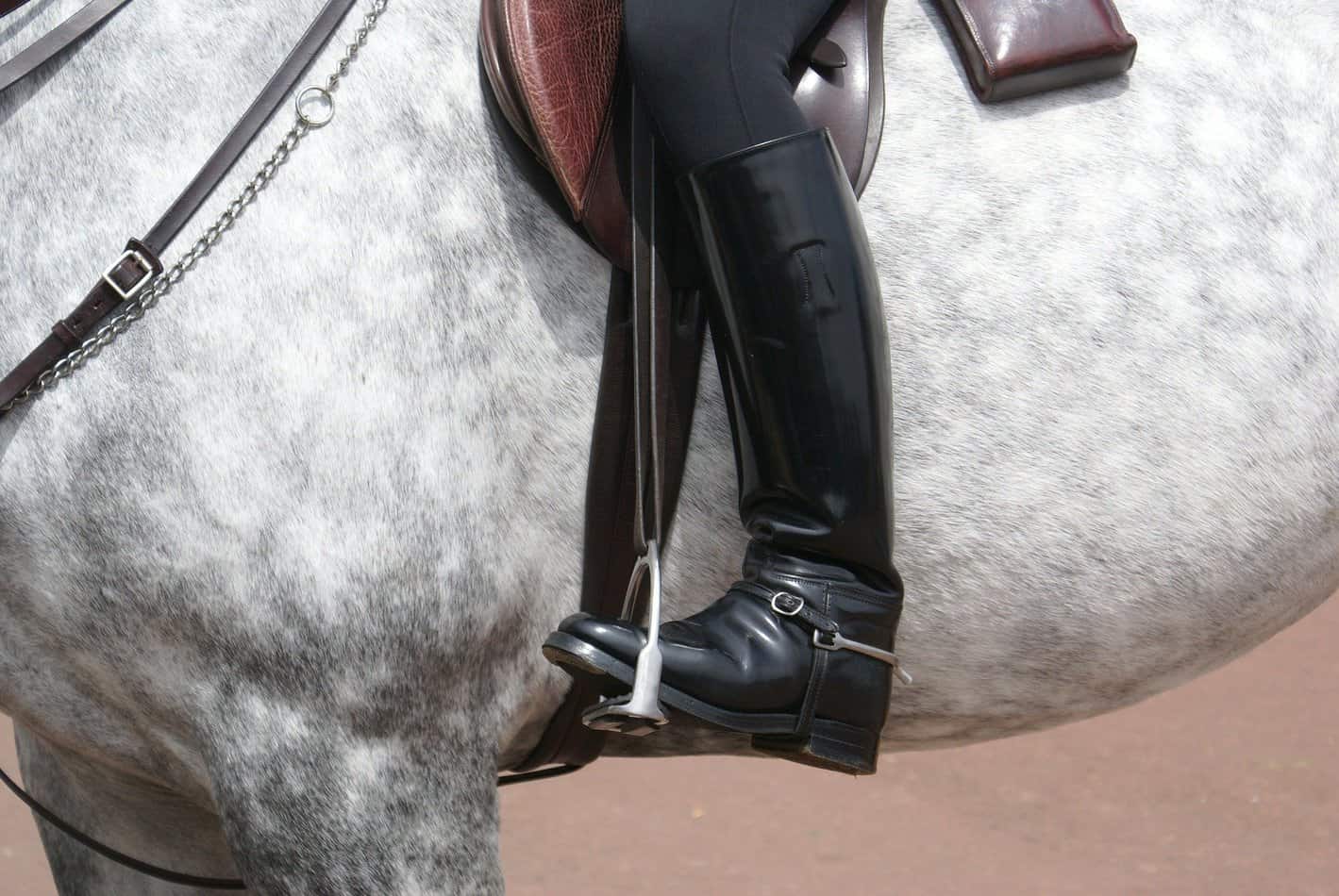Skip To Section
How Much Weight Can A Horse Carry?
The 20% rule states that horses can easily carry 20 percent of their body weight and not more. But it’s not as simple as following this rule. Several factors go into calculating the weight a horse can carry.
We often come across horses carrying heavy loads effortlessly. One would imagine that a horse that is so powerfully and muscularly built won’t have a problem carrying any weight. But are they carrying that weight effortlessly, or is it just something we tell ourselves to ease our conscience? Is there a limit to the weight a horse can carry?
As the average weight of the population continues to rise, riding schools and other organizations have voiced a concern regarding the weight that these animals are sometimes forced to carry.
Is There A Weight Limit For Riding A Horse? A Study On The Weight Carrying Ability Of Horses
Scientists from the Ohio State University Agricultural Technical Institute have conducted research on how much weight a horse can easily carry, and there is enough evidence now to suggest that horses do have a weight-carrying threshold.
In a study based on eight horses that ranged from 882 pounds to 1378 kgs that carried weights that were 15% to 30% of their body weight, it was established that they could easily carry 15% to 20% of their body weight. They showed signs of stress and seemed to struggle more when this load was increased to 25%. The physical signs of stress were accentuated as the load became heavier.
When made to carry loads that weighed approximately 25% of their own body weight, the horses had faster, more labored breathing and higher heart rates – physical signs of stress and strain. Twenty-four hours after trotting and cantering with heavyweights, their muscles were sore and tight.
The horses that were least sore from the load-carrying exercises were those that had wider loins (the part of the horse’s back that is located between the last rib and croup). However, even these horses struggled when they carried loads that were under 30% of their body weight.
Japanese research has revealed another new and reliable method to ensure horses are not overloaded. This study measures the gait symmetry – how even the horse’s left steps are to its right steps, during various gaits. According to this study, a gait can get out of sync when the load becomes too heavy. An abstract of the study is available here.

The Final Verdict
For optimal performance, horses must carry nothing more than 10 to 15% of their body weight. A maximum load of 20% is permissible.
That means a horse that weighs 1000 pounds should not be allowed to carry a weight of more than 200 pounds. Or a 1200 horse should not be allowed to carry more than 240 pounds. A 14.2 stone (approximately 200 pounds) horse will be able to carry a load of 1.4 stone.
Can A Horse Carry 300 Pounds?
The 20% rule has been followed for a hundred years. That rule has been backed by vast research and holds even today.
The results of the research conducted by Ohio State University Agricultural Technical Institute corresponds with the 1920 weight guidelines of the US Calvary Manuals of Horse Management.
Load a horse with over 20% of its body weight, and you could cause your horse to get stressed out and fatigued – not to mention the decrease in its performance.
So, for a horse to easily carry 300 pounds, it must weigh at least 100 pounds.
Other Factors That Affect The Weight A Horse Can Carry
The 20 percent rule is a general rule. There are other factors that affect the weight a horse can carry.
- An animal that lacks fitness and good muscle development might find it stressful to carry even 20% of its body weight.
- The weight that a horse can comfortably carry will also depend on the type of work it does, as well as the speed and duration for which the horse must carry out this work.
- The skill, fitness, and experience of the rider must be factored in as well. For example, jockeys are often built small, so they don’t weigh much. But a light rider who is inexperienced and lacks balance and coordination when riding can have a much more negative impact than a heavier rider who exhibits the greater skill, coordination, and balance on a horse. That is because a rider who lacks balance lands awkwardly and distributes his weight unevenly on the horse’s back. This can lead to problems such as lameness.
The Riding for the Disabled Association (RDA) has indicated that disabled riders are often unable to control their bodies. These riders have a tendency to be heavy because of their sedentary lifestyle. They are unbalanced on a horse’s back, which makes them seem heavier to the horse.

How To Ensure A Horse Is Not Overloaded
The 20% rule might seem easy enough to follow, but it is not that simple. There are other factors to be considered as well.
Here are some tips to ensure your horse is not overloaded:
- Keep in mind that some horse breeds can comfortably carry more weight than other breeds. So, while some might be able to carry even 22% of their body weight, there are other breeds that will be able to comfortably carry only 10% of their body weight. Different breeds must be evaluated for maximum weight loading carrying capacity.
- When measuring the weight of a rider, consider the weight of the saddle as well.
- Riders must be encouraged to identify a horse that is right for them.
- If a horse is on the heavy side, calculating 20% of the horse’s body weight should not be based on the horse’s current weight, but rather on the ideal weight of the horse.
- Check the saddle. A good rider with an ill-fitting saddle can cause serious problems for the horse.
- The 20% rule holds true for horses and ponies that are moderate to lightworkers. Those that work harder (for more than an hour or so), very young and very old horses must be allowed to carry only 10 to 15% of their body weight.
Conclusion
There is no doubt that horses – no matter their size, build, and weight – have limitations to the weight that they can comfortably carry. It’s important for riders and horse owners to understand this fact and follow the restrictions strictly to ensure the animal’s health and wellbeing.
Organizations that are involved with horses shows, and horse-riding schools must educate people on this important aspect of riding and discourage the overloading of these gentle and magnificent animals.
Following these restrictions will allow for both horses and riders to have a more pleasurable riding experience.
